Contents
Breeders try to offer farmers new cabbage hybrids with improved qualities every year, but most farmers trust only time-tested varieties. In particular, they include cabbage “Valentina f1”. This hybrid was bred in 2004 and has already managed to catch the fancy of many gardeners. The variety is late-ripening, has good external and taste qualities, is perfectly stored and suitable for fermentation. In general, it meets all the requirements and, probably, that is why it is popular. For those who are still unfamiliar with the culture, we suggest that you familiarize yourself with the description and photo of the Valentina f1 cabbage variety.
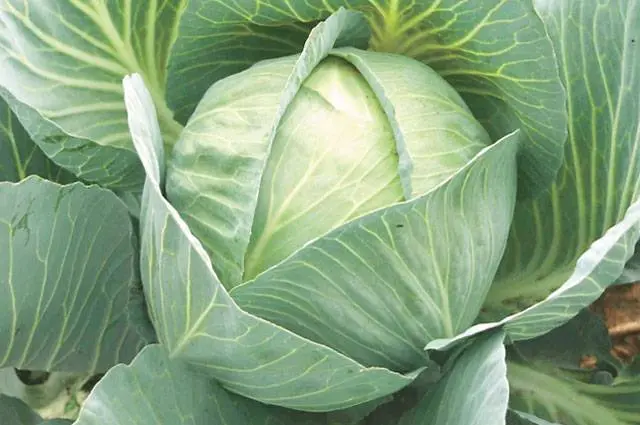
Detailed description of the variety
If you need to grow cabbage in the garden quickly, then the variety “Valentina f1” will not work. He is late. It takes approximately 170 days from seed germination to ripen its heads. You can speed up the growing process by breeding seedlings. This cultivation method is used by farmers in the central and northern regions of the country.
During the growth period, the variety “Valentina f1” forms a dense head of medium size. The average weight of a mature vegetable varies from 2 to 4 kg. Rounded heads of cabbage in the context of light, with a short white stalk. The leaves of the cabbage “Valentina f1” are small in size and have a slightly wavy edge. A wax coating can be observed on their surface.
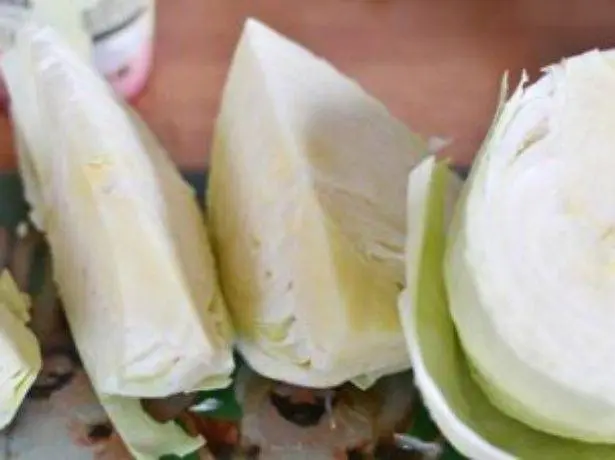
Good taste qualities are the hallmark of the variety. The leaves of the vegetable are juicy and crispy. They have a lot of sugar and almost no bitterness. The presence of a large number of vitamins makes cabbage “Valentina f1” not only tasty, but also very healthy. The product has a characteristic, pronounced fresh aroma. With such good characteristics, it is worth noting that as it ripens and is stored, the taste of Valentina f1 cabbage becomes better.
Variety “Valentina f1” has a high yield. With a relatively small size of heads, cabbage can yield in the amount of 7-8 kg / m2. This is achieved due to the high planting density. The root system of plants of the Valentina f1 variety is compact and allows planting on every 1 m2 soil about 3 seedlings.
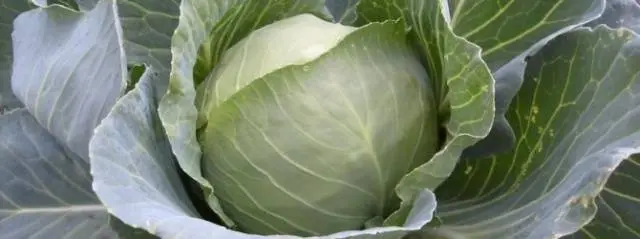
Cabbage “Valentina f1” is perfectly stored throughout the winter. So, harvested in October, the crop can lie in a cool place until June. When special storage conditions are created, this period can be extended for several more months. You can store cabbage “Valentina f1” in a processed form. Heads of cabbage are perfect for salting, preparing winter preparations. Even after processing, vegetables retain their original taste, aroma and freshness. You can learn more about the method of winter storage of cabbage and the advantages of the Valentina f1 variety from the video:
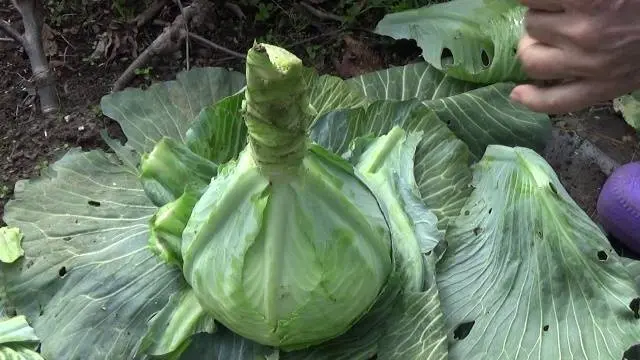
Cabbage variety “Valentina f1” is resistant to cracking and retains its excellent appearance and high commercial qualities under any conditions. Heads are suitable for long-term transportation. These properties, combined with high yields, make Valentina f1 an ideal commercial option.
Variety resistance to diseases and pests
Cabbage is by nature very delicate and vulnerable to various misfortunes. When breeding the Valentina f1 hybrid, breeders tried to put some stability into the genetic code, and in part they succeeded. So, cabbage “Valentina f1” has excellent resistance to black leg, Alternaria, white and gray rot, vascular bacteriosis and some other ailments. Of all the possible diseases, only clubroot, blossom end rot and spot necrosis pose a threat to the variety. You can fight these diseases with the help of special drugs and folk remedies:
- The presence of vertex rot is signaled by the dying off of the edges on the outer sheets of the head. This disease is spread by the larvae of the cabbage fly. You can fight it by using tobacco dust and phosphate rock.
- Spot necrosis is dark spots on the outer and inner leaves of the cabbage. The development of this non-communicable disease can be stopped by applying potassium fertilizers to the soil.
- Kila is a numerous growths on the roots of cabbage. They impede the movement of fluids, as a result of which the plant slows down its growth, and then completely dies. The causative agent of the disease is a fungus that can spread with air flow or seeds. It is pointless to treat affected plants; if symptoms are found, the cabbage should be removed from the garden to prevent soil contamination. After removing the plants, the soil should be disinfected with slaked lime and special antifungal drugs such as Fundazol, Cumulus.
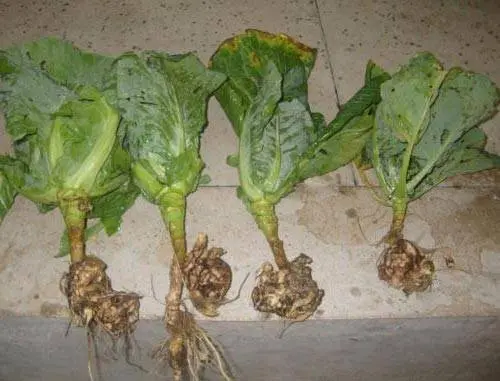
These diseases can be avoided by reducing the amount of nitrogen fertilizing and regulating soil moisture. With proper care, cabbage “Valentina f1” will withstand the effects of all possible viruses and fungi.
“Valentina f1” has good disease resistance, but, unfortunately, it cannot resist pests. Therefore, to prevent parasitism of the cruciferous flea, cabbage fly, white butterfly and other insects, it is worth using preventive measures to protect plants. Timely used tobacco dust, wood ash and all kinds of traps will surely protect the cabbage without harming the quality of vegetables.
Advantages and disadvantages of the variety
Having carefully studied the description of the cabbage “Valentina f1”, we can talk about its advantages and disadvantages. So, the positive qualities of the variety include:
- high yield;
- excellent taste of cabbage, lasting for a long time and even after processing;
- excellent keeping quality and universal purpose of the product;
- resistance to cracking;
- good transportability and high commercial qualities;
- high resistance to most common diseases.
Among the shortcomings of the variety, some features of cultivation should be highlighted:
- cabbage “Valentina f1” is very photophilous;
- vegetables cannot grow fully with excessive watering;
- a long ripening period allows you to grow cabbage only in seedlings.
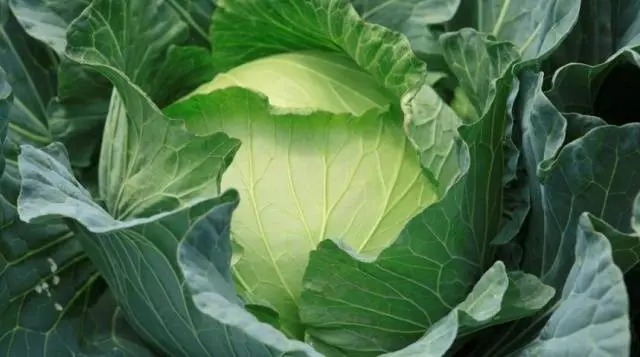
It is thanks to this combination of qualities that Valentina f1 cabbage has become a popular favorite. It is grown in almost every garden. The high yield of the variety allows you to prepare pickled, fresh and canned vegetables in the required quantity for the whole family for the whole season.
Peculiarities of growing
As a rule, seeds from the manufacturer have already been pre-treated and do not require additional measures before sowing. Such seeds are often covered with multi-colored glaze. If the seeds were harvested at home or the manufacturer did not take care of their appropriate preparation, then the farmer must independently process the grains:
- Soaking in a 1% manganese solution will help get rid of possible pests.
- Hardening should be carried out during the day at a temperature of +10C for endowing future seedlings of the Valentina f1 variety with increased resistance to weather disasters.
- The potassium humate solution will allow the seeds to store nutrients and speed up their germination. Soak grains of cabbage in such a fertilizer should be for 12 hours immediately before sowing seedlings.
Soil for sowing cabbage seeds for seedlings should be prepared by mixing peat, garden soil and sand. To destroy viruses, fungi and pest larvae, the soil must be heated at a temperature of + 150- + 1700C.
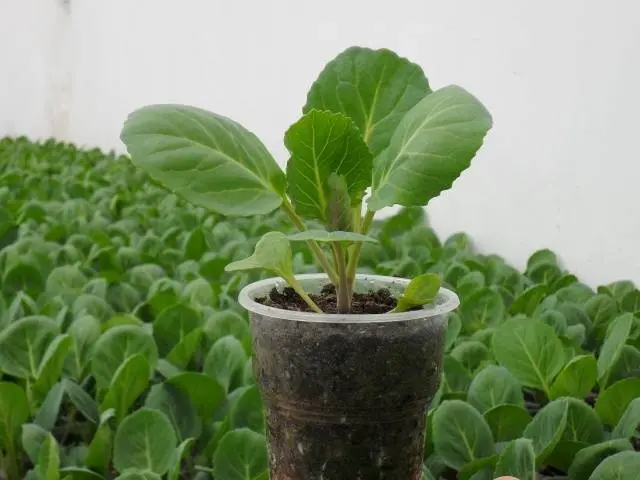
It is necessary to sow the seeds of the variety “Valentina f1” for seedlings 35-45 days before the intended planting of seedlings in the ground. The container for growing seedlings must be drained. You need to sow seeds in 2-3 pieces. to a depth of 1 cm. After 5-7 days in a warm place, the seedlings will begin to germinate. At this time, they need to provide maximum illumination.
If the grains were sown in a common container, then the seedlings of the Valentina f1 variety should be dived into separate containers at the age of 15 days. 2-3 days before picking, it is recommended to feed the plants with potassium-phosphorus fertilizers.
To grow cabbage in the garden, a sunny area protected from strong winds is chosen, chalk or dolomite flour, organic matter and minerals are introduced into the soil. At the time of planting, cabbage seedlings should have 5-6 true leaves more than 15 cm long. Plants should be planted in 2-3 pieces. per 1 m2 of the earth.
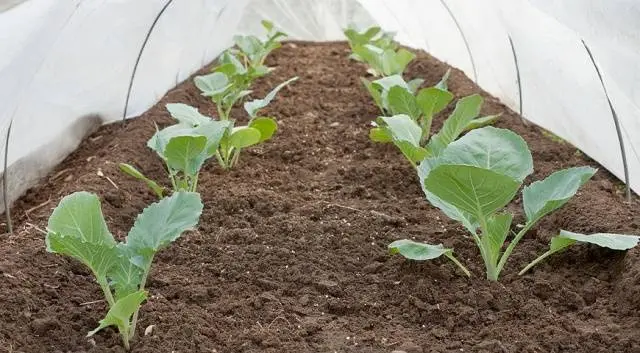
You need to take care of the variety “Valentina f1” carefully, especially the plants are afraid of excessive watering. So, in hot weather it is recommended to pour 20 liters of warm water per 1 m2 soil. In cloudy weather, the volume of liquid should be reduced to 15 liters. After watering, the earth must be loosened 5-6 cm deep. A month before harvesting, watering should be completely stopped.
Conclusion
Cabbage “Valentina f1” is a wonderful late-ripening variety that can give a good harvest to both an experienced and novice gardener. Tight heads of cabbage have a high external and taste quality. They can be fermented and kept fresh for a long time. Delicious cabbage will become a real storehouse of vitamins and will support human immunity during the cold period of the spread of viral and infectious diseases. Thus, cabbage is not just a food product, it is a low-calorie, healthy and tasty vegetable.









